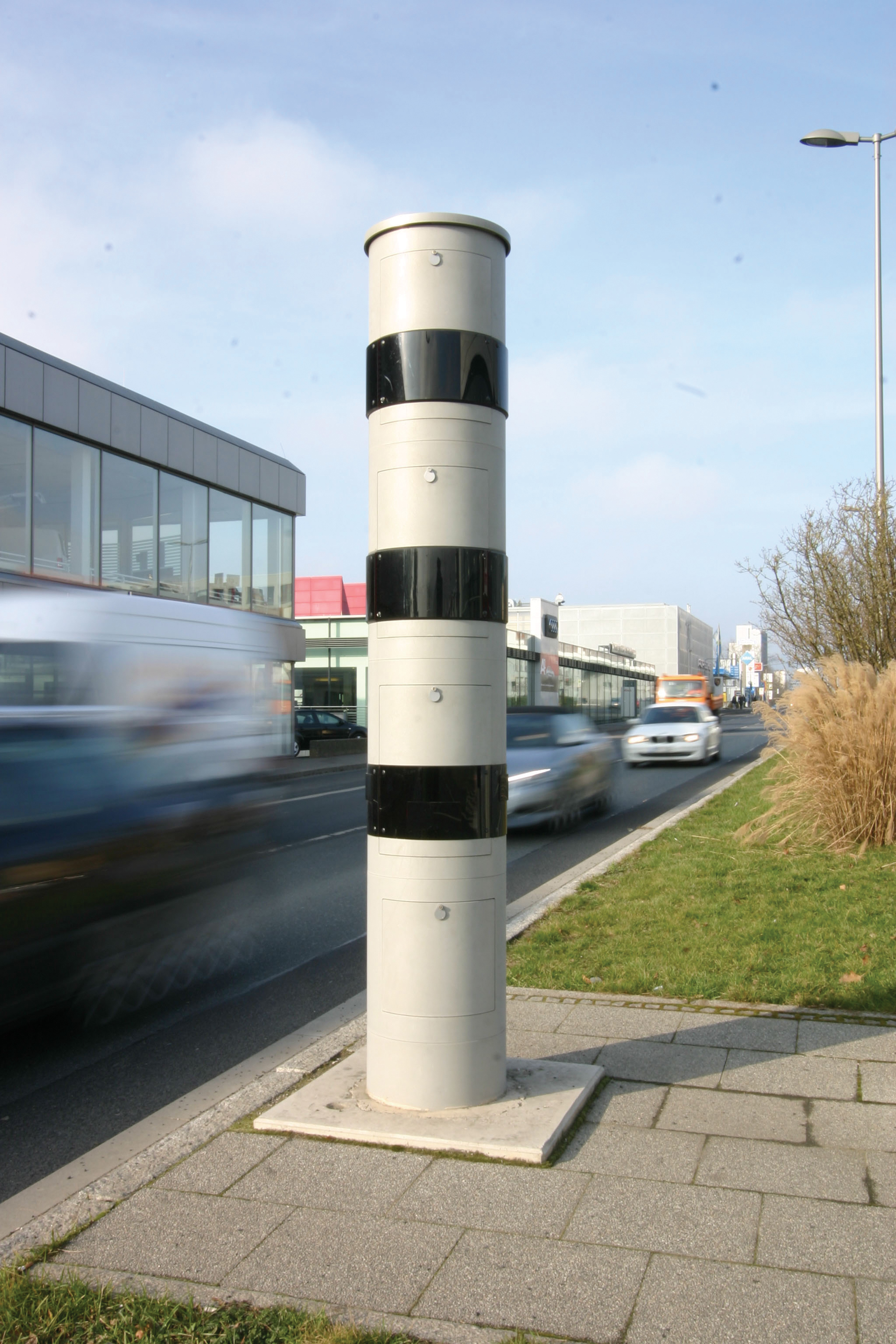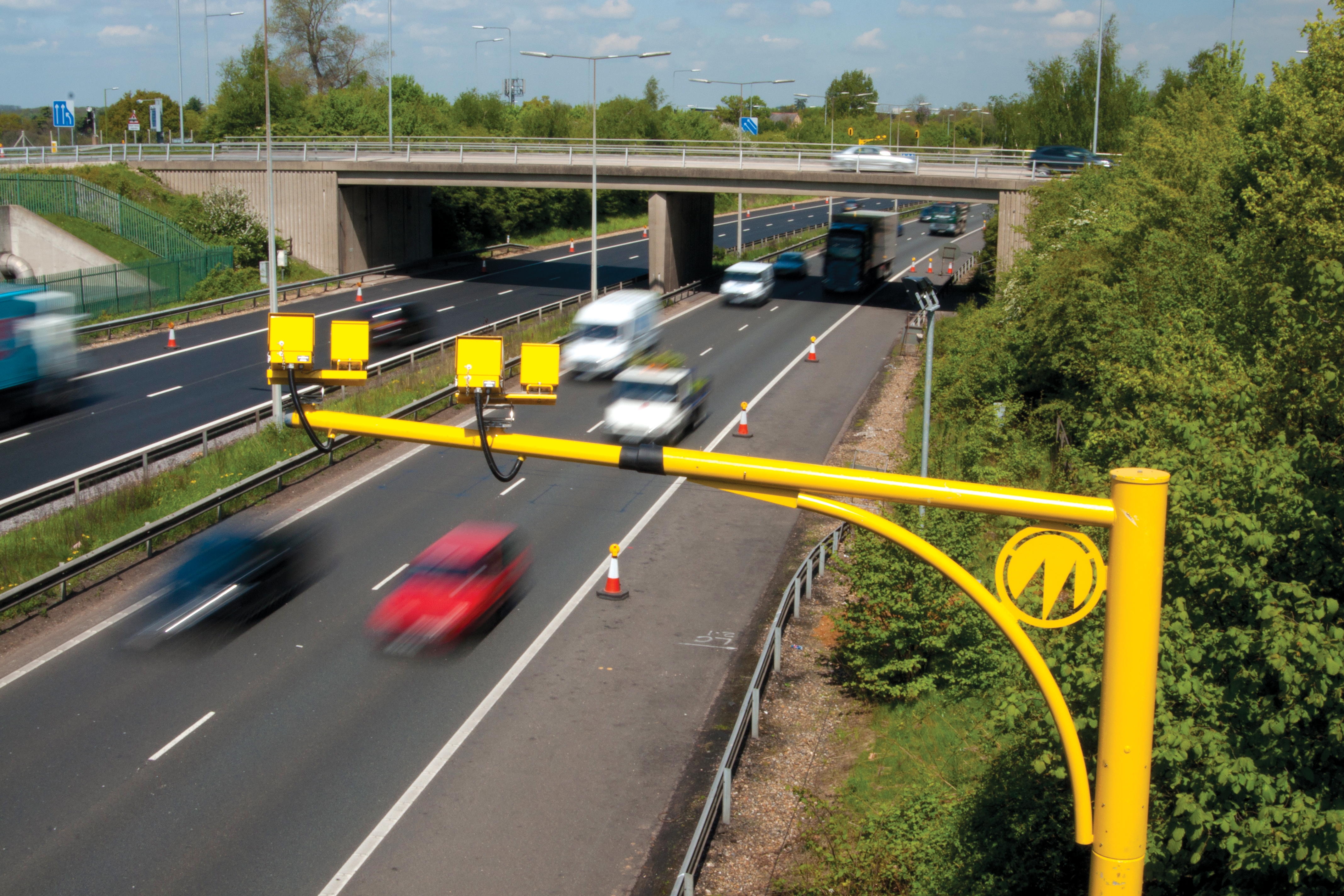Leading automated enforcement system suppliers talk about how they see machine vision technology
affecting the sector in the coming years

Networked solutions and the trend towards systems which can cope with more complex enforcement environments and multiple applications are driving machine vision’s adoption
Leading automated enforcement system suppliers talk about how they see machine vision technology affecting the sector in the coming years
Although machine vision is still new to many areas of traffic management, it is already somewhat more common currency in the automated enforcement sector. This is unsurprising, as this is a top-end area of application where a good business case can be made for what can still be relatively expensive technology.Digitisation and networked enforcement have encouraged adoption – average speed monitoring solutions provide a case in point – as does the increasing preference for non-invasive technology. Nevertheless, support for and perceptions of machine vision as a solution varies widely even among manufacturers and suppliers. This is also unsurprising given that some will have adopted the technology early and have market-ready solutions whilst others will still be looking to derive as much profit and market share as they can from sunk development costs.
Now and then
“For the immediate future we see machine vision supplementing established technologies, carrying out ANPR [Automatic Number Plate Recognition] or vehicle classification. In the next five years we expect to see it be able to work together with current detection technologies. This sensor fusion will result in higher detection rates and provide secondary, independent verification of another detection technology. In the five to 10-year period machine vision certainly has the potential to bring about a wholesale change, except in the case of a few applications such as weigh in motion.”
Diminishing cost
Because machine vision requires highresolution cameras, a lot of computing power and, usually, high-volume data transmission its use in traffic enforcement has been limited to date, says“But technology is progressing rapidly and computing power is increasing dramatically, bringing prices down. The algorithms for machine vision are also progressing; there are many advanced mtechniques which speed up optical mcharacter recognition and its quality.
“A major reason for the increasing use of machine vision is the growing number of new and more complex applications, so enforcement does not have to be tailored to one application such as speed, for example. The trend is to offer a system which enhances traffic safety by mcovering all different enforcement aspects, such as oversized vehicles or dangerous goods tracking as well as providing a warning and information system.
“Machine vision certainly is a part of our product strategy. Next to speed and red light enforcement, where traditional mlicense plate recognition is sufficient, we are researching and developing solutions for new applications such as highoccupancy lane enforcement which undoubtedly require these technologies.
“We believe established enforcement principles will continue using traditional techniques for the foreseeable future. Most customers see no need to leave successfully implemented solutions. For example, the enforcement sector in mature markets such as Europe has tended to be quite conservative in the past and homologation requirements are restrictive; drastic changes don’t happen overnight.
“The shift from wet film to digital cameras started happening in the 1998- 2006 timeframe and still isn’t completed so we continue our technological progress in the area of traditional non-invasive technologies like radar and laser measurement devices. We are in the process of continuously further enhancing our Jenoptik Robot 3D radar and laser sensors that have multi-target capability. This is one of the stronger market demands we are responding to.
“In more advanced markets, we see a trend for the intelligent combination of multiple applications. Machine vision aspects play a vital role in almost all of these concepts. Typical applications include, for example, border control systems that are tightly integrated with traditional traffic safety applications.”
Interdisciplinary nature
Italian company“The initial reason of our decision was our 10 years of experience in machine vision,” says the company’s Stefano Arrighetti. “While other commercial sectors rapidly developed computer vision applications in the same years, other operators in the traffic market were quite reluctant and still are.
“In my opinion, this is due to the interdisciplinary nature of the new approach. Real-time algorithm implementation is only one side of the story; anyone who assumes that Kria is just a software company doesn’t know 90 per cent of what we do.
Metrological procedures, lighting design, optics, micron-precision mechanics and protection against atmospheric elements must be taken into account, and all at the same time. But the result is a device can that manage complex traffic scenarios providing 3D trajectories, classification, colour images and number plate recognition of every passing vehicle, so machine vision was a game that was worth the candle.
Every violation based on trajectory can be detected and every piece of visual information such as license plate, Kemler code and vehicle brand, name and colour can be identified.”
Replacing the traditional
“Clearly, machine vision is the state of the art,” says the company’s Daniel Scholz. “Its capabilities easily outmatch other technologies as it makes applications such as speed or red light enforcement possible in situations where other technologies fail: in bends or road work areas, when vehicles change lanes or tailgate. In other enforcement scenarios such as tolling or ANPR, machine vision systems are also able to detect, identify and classify vehicles at the same time. Lidar-based machine vision technology makes in-road equipment a thing of the past and allows operation and maintenance in free-flowing traffic.
“Traditional technologies such as radar or in-road loops still play an important role in traffic enforcement. But this is due to an historical lack of alternatives rather than their being superior. Now that highly modern technology is available, traditional solutions will gradually vanish. A trend can already be observed: defective loops or sensors often push the user to exchange the old system for a new one that operates without in-road equipment.”
Qualified success
Machine vision technology contributes to enforcement in two very important ways, according to Charles Territo of“More and more enforcement systems utilise machine vision cameras. Their high-resolution and high dynamic range CCD or CMOS image sensors allow crisp images of violations to be captured at high frame rates, leading to increased capture and conviction rates and increased confidence in the photographic evidence generated.
“Advanced machine vision and imageprocessing algorithms provide a costeffective, non-invasive detection solution for red light, tailgating, lane-changing and other types of enforcement. For speed enforcement, video-based speed detection technology is still in its development phase and has yet to prove its accuracy and reliability under all lighting conditions.
“ATS utilises both machine vision cameras and vision-based sensors in its front-end products. Since we deal with large amount of images and videos on a daily basis, we also explore and apply advanced vision algorithms to improve our operation efficiency.
“We at ATS believe machine vision will play a more and more important role. On the hardware side, we’ve already seen an accelerated transition from film- and analogue-based cameras to digital and IPbased cameras. On the software and algorithm side, machine vision holds tremendous potential for providing costeffective solutions as well as solutions that cannot be easily achieved by ‘traditional’ technology such as inductive loop and piezoelectric sensors. However, we think the change will be a gradual one as machine vision still has large room for improvement when it comes to accuracy and robustness in real-world environment. For speed enforcement, a technology has to go through a rigorous certification process and our view is that vision-based average speed is still yet to be further improved in order to be used for speed enforcement.”
Validation
That last comment might cause some raised eyebrows at UK firm“I believe that appropriate use of machine vision technology is very valid for enforcement applications – it has been used for many years in the monitoring and control of production lines, where it can identify and inspect components as they pass through a factory,” says the company’s Geoff Collins.
“You can make a direct comparison if you consider a highway to be an oversized production line. However, having been personally involved with machine vision for many years, I know how important it is to not overstate the capabilities of the technology. For example, production lines deal with exactly the same component, day in, day out – it will probably be presented in the same orientation with perfect, dedicated lighting. This allows the processor to concentrate on the key inspection task, but even so, the software can and does make unexpected mistakes every so often.
“The situation is far more challenging on a road, where each vehicle will be of a different age, style and colour, not to mention the variable lighting and weather that come into play. If correctly applied, machine vision can offer a lot in certain situations – for example, an ANPR camera is basically a machine vision camera which interprets a video image to identify a vehicle’s number plate. Video analytics will also allow some further analysis of vehicle flows, for instance identifying when a vehicle is moving into a controlled area such as a one-way street, box junction or closed lane). However, when considering more advanced applications like this, I feel it is likely that the machine vision software will act as a pre-filter, rather than the complete system. Having seen ‘perfect’ machine vision systems rejecting seemingly identical components, I wouldn’t put my faith in this technology operating objectively on a rainy night compared to a sunny day.
“Vysionics already integrates machine vision into its solutions and will undoubtedly continue to do so. Machine vision is a powerful tool that can be included as part of an effective roadside solution. However, the environmental demands on roadside equipment are sufficiently higher than in industrial applications that dedicated systems are necessary. For example, temperature, humidity, lighting and wind conditions can vary significantly, but the system must continue to operate.”










